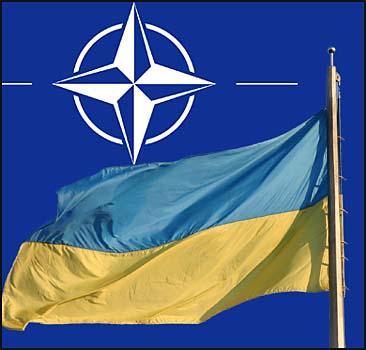NATO’s Rearming of Ukraine Under Sea Breeze 2021 Guise Is for Future Conflict in Donbass

All Global Research articles can be read in 51 languages by activating the “Translate Website” drop down menu on the top banner of our home page (Desktop version).
Visit and follow us on Instagram at @crg_globalresearch.
***
With the participation of the U.S., Canada, Great Britain, the Netherlands, Romania, Bulgaria, Greece, Turkey, Latvia and other partner countries of NATO, Ukraine’s Defense Ministry and the U.S.’ European Command will hold massive joint drills from June 28 to July 10. These exercises are so huge in fact that it involves about 4,000 military personnel, 40 combat ships, vessels and auxiliary craft, 30 aircraft and over 100 armored vehicles.
Although the joint Ukraine-NATO military training, dubbed Sea Breeze 2021, is undoubtedly aimed at improving the inter-operability between participants in a hypothetical war against Russia, the most alarming fact is that the Ukrainian military and the Far-Right militias will be supplied with advanced weapons and munitions over the course of the exercises – this was supposed to be hidden from Russia.
The Sea Breeze 2021 exercise comes as Russia condemns NATO activities which have become frequent in recent years near its western border. NATO, for its part, says it wants to contain so-called Russian aggression by sending reconnaissance ships, planes and drones to the Black Sea region.
On March 19, NATO launched the Sea Shield-21 exercises in the Black Sea. The exercises had more than 2,400 soldiers, 18 warships and 10 planes. On March 17, the Spanish frigate Méndez Núñez entered the area showing its support for Ukraine and Georgia after NATO had already strengthened its presence there for a few weeks. On February 25, the Spanish and Greek mine hunters Tajo and Evropi also entered the Black Sea. In early February, two American destroyers, the USS Donald Cook and the USS Porter, left the Black Sea after participating in military maneuvers. These are only but a few examples of NATO activity in the Black Sea aimed at pressuring and containing Russia.
After a mostly respected ceasefire during the second half of 2020, clashes have been increasing since early 2021 between NATO-backed Ukrainian military/Far-Right militias and the local defense forces of Donbass. At the same time, tensions increased with Moscow, which deployed tens of thousands of soldiers near the Ukrainian border, raising fears of a large-scale military operation. Ukraine accuses Russia of looking for a pretext to invade it, while Moscow continually assures that it is not “threatening anyone” but is prepared to respond to any provocation.
Emboldened by this Western support, Ukrainian President Vladimir Zelensky announced last month his plans to build two entire naval bases in the south of the country “to protect the Black Sea region.”
Following the Joint Effort 2020 military exercise in the Mykolaiv region in southern Ukraine, which had the participation of 450 British paratroopers, Ukrainian Foreign Minister Dmytro Kuleba said that he would like the British to stay there. He emphasised that Britain has always supported Ukraine’s struggle for independence and helped to resist “Russian aggression.”
So far, London has not responded to Kiev’s call, but does continue to work actively in this region against Russia, especially as British Navy vessels regularly visit the Black Sea. Military technical cooperation between the two countries is expanding though.
Earlier this year, Zelensky signed an agreement with a British credit agency. Under its terms, the British will build NATO-compliant missile boats for the Ukrainian Navy. Before Kuleba, no one had the idea of a British base in the Mykolaiv region. The deployment of foreign military infrastructure is prohibited by Article 17 of the Ukrainian Constitution, although a special agreement was reached for Russia to have a base in Sevastopol when Crimea was still under Ukrainian sovereignty. Theoretically, the Ukrainians can make an exception for the British if they wanted.
Although it is unlikely for the British to have a permanent base in Ukraine’s Black Sea territory, they will certainly not shy away from militarizing the country. It is for this reason that under the guise of needing specific equipment for the Sea Breeze 2021 exercises that NATO, particularly the U.S. and UK, will arm Ukraine.
Earlier this year, when it appeared that simultaneous operations by the Ukrainian and Azerbaijani military in their respective conflict zones would occur, Russia’s rapid mobilization to respond to any aggression against Russian passport holders in Donbass deterred such ideas.
NATO quickly realized that Ukraine had little chance of success and delayed military operations against Donbass until better preparations could be made. It now appears that NATO is working towards this goal by endlessly conducting military exercises with Ukraine. Now they are using Sea Breeze 2021 exercises to covertly deliver high-tech equipment to Ukraine. Russia’s mobilization earlier this year revealed the short-comings of Ukraine’s military and NATO is now attempting to compensate for these shortcomings, suggesting that a new conflict in Donbass has only been delayed, not deterred.
*
Note to readers: Please click the share buttons above or below. Follow us on Instagram, @crg_globalresearch. Forward this article to your email lists. Crosspost on your blog site, internet forums. etc.
Paul Antonopoulos is an independent geopolitical analyst.

